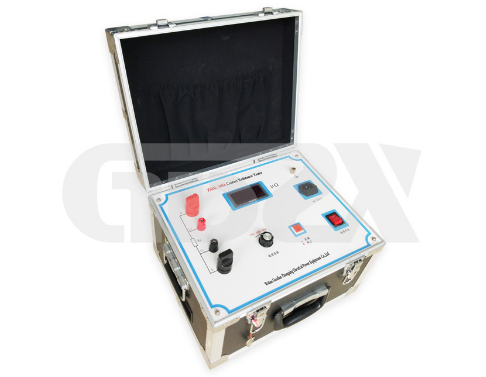NEWSnews
Precision Contact Resistance Measurement: ZXHL-300A vs. Traditional Testers
Accurate measurement of contact resistance in high-voltage switching equipment (circuit breakers, disconnectors, switchgear) is paramount. Excessive resistance at contact points generates dangerous localized heating, accelerates degradation, and poses significant failure risks. While contact resistance testers have long been essential tools, technological advancements have significantly improved their performance and reliability. The ZXHL-300A Contact Resistance Tester exemplifies this progress, offering distinct advantages over older impulse-type designs.
The Challenge: Overcoming Contact Barriers
Switch contacts develop micro-scale oxide films and contamination over time, especially after periods of inactivity. These films act as insulators, artificially inflating resistance measurements. Traditional impulse-type testers apply a very high, momentary current pulse (e.g., 100A or 200A) for a fraction of a second. The theory is that this pulse will "burn through" the oxide layer.
Limitations of Impulse-Type Testers:
Inconsistent Breakdown: The short duration pulse may not reliably break down thicker or more stubborn oxide films.
Measurement Instability: Readings can fluctuate significantly during the brief pulse, making accurate capture difficult and prone to error.
Limited Repeatability: Results can vary between tests on the same contact due to inconsistent oxide breakdown.
Sensitivity to Interference: Electrical noise in substation environments can easily distort the short measurement window.
Questionable Accuracy: The combination of unstable readings and potential incomplete oxide breakdown leads to less reliable results.
The ZXHL-300A Solution: Constant Current Precision
The ZXHL-300A addresses these limitations head-on through its core design principle: sustained high-current DC output from a constant current source (user-selectable: 100A, 200A, or 300A).
Key Advantages & Features:
1.Effective Oxide Penetration: The sustained current (DC 100A/200A/300A) applies constant energy, reliably breaking down even tough oxide films and contamination on contacts, ensuring measurements reflect the true metallic contact resistance.
2.Unmatched Stability & Accuracy:
Utilizes high-frequency switching power supply technology and advanced digital circuitry.
Maintains exceptional stability even under strong electromagnetic interference (EMI), typical in HV substations. The displayed value fluctuates by ≤ ±1 LSD (Least Significant Digit).
High accuracy of 0.50% across its wide measurement range (1 - 1999.9 µΩ) with a resolution of 1 µΩ.
Excellent reproducibility – repeated tests on the same contact yield consistent results.
3.Environmental Resilience:
Incorporates high-precision resistors specifically designed to minimize the impact of ambient temperature variations (-10°C to 40°C).
Operates reliably in humid conditions (≤80% RH).
Contributes to long-term measurement consistency and instrument longevity.
4.Continuous Operation: Designed for sustained testing duty cycles, crucial for testing multiple contacts or troubleshooting.
5.Operational Efficiency:
Compact & Portable: Dimensions (380x350x260mm) and weight (12kg) make it significantly easier to transport and maneuver on-site compared to bulkier legacy equipment.
Clear Display: 3½ digit LED display provides clear, unambiguous readings.
Optional Printer: Built-in printer option (customer specified) allows immediate hardcopy documentation of results.
Comparison: ZXHL-300A vs. Traditional Impulse Tester
Feature | Traditional Impulse Tester | ZXHL-300A Contact Resistance Tester |
Test Current | Short Duration High Pulse | Sustained DC (100A/200A/300A) |
Oxide Breaking | Inconsistent, may fail | Reliable & Effective |
Reading Stability | Fluctuates significantly | Extremely Stable (±1 digit) |
Repeatability | Lower | High |
Accuracy | Potentially Compromised | High (0.50%) |
EMI Immunity | Poor (Noise distorts pulse) | Excellent (Digital Filtering) |
Temp. Drift | Often Susceptible | Minimized (Precision Resistors) |
Operation | Momentary | Continuous |
Portability | Often Bulkier/Heavier | Compact & Lightweight (12kg) |
Display | Often Analog or Basic Digital | Clear 3½ LED |
Data Output | Rare | Optional Built-in Printer |
Applications: Where Precision Matters
The ZXHL-300A is the preferred tool for:
1.Preventive Maintenance: Accurate baseline and trending measurements on HV circuit breakers, disconnectors, and busbar connections in substations and power plants.
2.Troubleshooting: Identifying contacts causing abnormal heating or potential failure points.
3.Factory Acceptance Testing (FAT): Verifying contact resistance meets specifications on new or refurbished HV switching equipment before shipment/installation.
4.Commissioning: Ensuring proper installation and contact integrity of new switchgear.
Conclusion
For power system technicians and engineers responsible for the reliability of high-voltage infrastructure, accurate contact resistance measurement is non-negotiable. The ZXHL-300A Contact Resistance Tester, with its constant current technology, advanced digital processing, and robust design, provides a significant leap forward in measurement confidence compared to older impulse-type testers. Its ability to reliably break through contact films, deliver stable and accurate readings even in noisy environments, and operate continuously makes it an indispensable tool for effective maintenance, commissioning, and quality control of critical switching equipment. When precise diagnosis of contact health is required, the ZXHL-300A delivers the necessary performance and reliability.
GDZX is a manufacturer of power detection equipment, offering a diverse range of products with comprehensive models and providing professional technical support. Contact us at +86-27-6552607 or +86-17396104357.Website: http://en.gdzxdl.com/






















